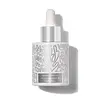What's inside
What's inside
 Key Ingredients
Key Ingredients

No key ingredients
 Benefits
Benefits

 Concerns
Concerns

No concerns
 Ingredients Side-by-side
Ingredients Side-by-side

Water
Skin ConditioningPropylene Glycol
HumectantIsononyl Isononanoate
EmollientGlycerin
HumectantCyclopentasiloxane
EmollientCyclohexasiloxane
EmollientHydroxyethyl Acrylate/Sodium Acryloyldimethyl Taurate Copolymer
Emulsion StabilisingDimethicone
EmollientPhospholipids
Skin ConditioningIsohexadecane
EmollientStrelitzia Nicolai Seed Aril Extract
Skin ConditioningGlycine Soja Extract
Skin ConditioningPolysilicone-11
Polysorbate 60
EmulsifyingBiosaccharide Gum-1
HumectantSorbitan Isostearate
EmulsifyingCaprylyl Glycol
EmollientPhenoxyethanol
PreservativeSodium Hydroxide
BufferingCitric Acid
BufferingWater, Propylene Glycol, Isononyl Isononanoate, Glycerin, Cyclopentasiloxane, Cyclohexasiloxane, Hydroxyethyl Acrylate/Sodium Acryloyldimethyl Taurate Copolymer, Dimethicone, Phospholipids, Isohexadecane, Strelitzia Nicolai Seed Aril Extract, Glycine Soja Extract, Polysilicone-11, Polysorbate 60, Biosaccharide Gum-1, Sorbitan Isostearate, Caprylyl Glycol, Phenoxyethanol, Sodium Hydroxide, Citric Acid
Aloe Barbadensis Leaf Juice
Skin ConditioningWater
Skin ConditioningGlycerin
Humectant3-O-Ethyl Ascorbic Acid
Skin ConditioningGlyceryl Oleate Citrate
EmulsifyingAdansonia Digitata Seed Oil
EmollientSodium Hyaluronate
HumectantPropanediol
SolventBakuchiol
AntimicrobialMorus Nigra Leaf Extract
Skin ConditioningPhyllanthus Emblica Fruit Extract
HumectantArctostaphylos Uva-Ursi Leaf Extract
Skin ConditioningTerminalia Ferdinandiana Fruit Extract
AntioxidantFerulic Acid
AntimicrobialGlycyrrhiza Glabra Root Extract
BleachingCaprylic/Capric Triglyceride
MaskingPentylene Glycol
Skin ConditioningSclerotium Gum
Emulsion StabilisingAcacia Senegal Gum
MaskingLeuconostoc/Radish Root Ferment Filtrate
AntimicrobialHydroxypropyl Cyclodextrin
MaskingPhenethyl Alcohol
MaskingSodium Hydroxide
BufferingAloe Barbadensis Leaf Juice, Water, Glycerin, 3-O-Ethyl Ascorbic Acid, Glyceryl Oleate Citrate, Adansonia Digitata Seed Oil, Sodium Hyaluronate, Propanediol, Bakuchiol, Morus Nigra Leaf Extract, Phyllanthus Emblica Fruit Extract, Arctostaphylos Uva-Ursi Leaf Extract, Terminalia Ferdinandiana Fruit Extract, Ferulic Acid, Glycyrrhiza Glabra Root Extract, Caprylic/Capric Triglyceride, Pentylene Glycol, Sclerotium Gum, Acacia Senegal Gum, Leuconostoc/Radish Root Ferment Filtrate, Hydroxypropyl Cyclodextrin, Phenethyl Alcohol, Sodium Hydroxide
Ingredients Explained
These ingredients are found in both products.
Ingredients higher up in an ingredient list are typically present in a larger amount.
Glycerin is already naturally found in your skin. It helps moisturize and protect your skin.
A study from 2016 found glycerin to be more effective as a humectant than AHAs and hyaluronic acid.
As a humectant, it helps the skin stay hydrated by pulling moisture to your skin. The low molecular weight of glycerin allows it to pull moisture into the deeper layers of your skin.
Hydrated skin improves your skin barrier; Your skin barrier helps protect against irritants and bacteria.
Glycerin has also been found to have antimicrobial and antiviral properties. Due to these properties, glycerin is often used in wound and burn treatments.
In cosmetics, glycerin is usually derived from plants such as soybean or palm. However, it can also be sourced from animals, such as tallow or animal fat.
This ingredient is organic, colorless, odorless, and non-toxic.
Glycerin is the name for this ingredient in American English. British English uses Glycerol/Glycerine.
Learn more about GlycerinSodium Hydroxide is also known as lye or caustic soda. It is used to adjust the pH of products; many ingredients require a specific pH to be effective.
In small amounts, sodium hydroxide is considered safe to use. However, large amounts may cause chemical burns due to its high alkaline.
Your skin has a natural pH and acid mantle. This acid mantle helps prevent harmful bacteria from breaking through. The acid mantle also helps keep your skin hydrated.
"Alkaline" refers to a high pH level. A low pH level would be considered acidic.
Learn more about Sodium HydroxideWater. It's the most common cosmetic ingredient of all. You'll usually see it at the top of ingredient lists, meaning that it makes up the largest part of the product.
So why is it so popular? Water most often acts as a solvent - this means that it helps dissolve other ingredients into the formulation.
You'll also recognize water as that liquid we all need to stay alive. If you see this, drink a glass of water. Stay hydrated!
Learn more about Water